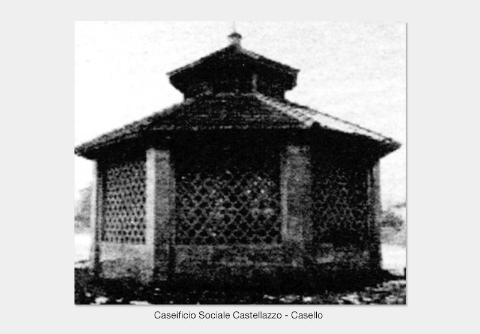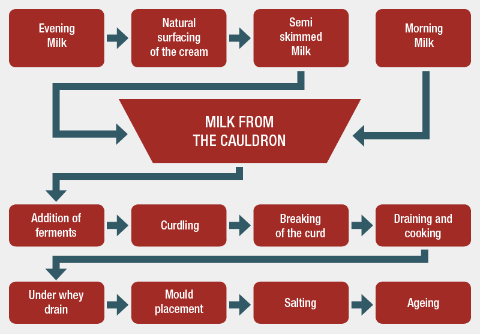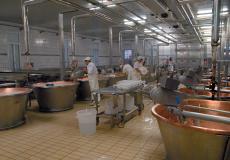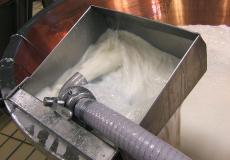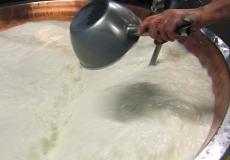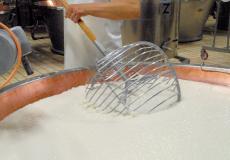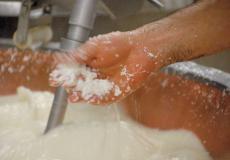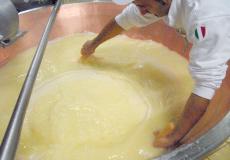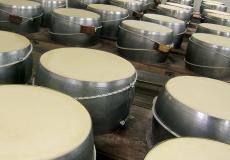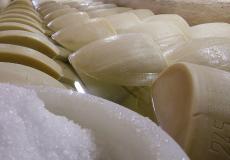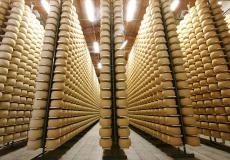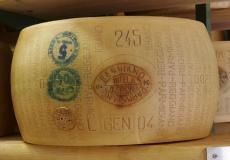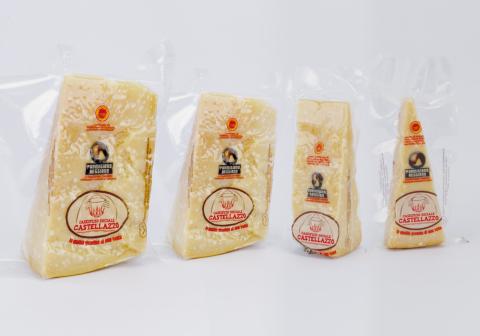History
There is plenty of historical and scientific literature regarding Parmigiano Reggiano, as evidence of its notoriety, its quality, and its increasing indispensability. Ancient sources mention, in general, a hard, aged "caseus" (cheese), not otherwise specified. To get to the first actual literary document we must wait until the 14th century, when Giovanni Boccaccio affirms, through Calandrino's mouth, that there is no higher aspiration, in his times, than living "at the top of a mountain of grated Parmesan cheese". In the 15th and 16th centuries, according to culinary treaties, Parmigiano Reggiano was already abundantly employed in the preparation of several recipes, including in other regions than the Cisalpine area. Parmesan becomes more and more requested and popular. Mentions of its use can be found in diaries written by writers, diplomats and travellers, who, when journeying through Italy between the 17th and 19th centuries, always remembered it and appreciated it. This cheese was so important that these passing writers also wanted to visit the place where it was made.
This allows us to have, in several cases, useful descriptions that help us get to know a society that is still largely unknown to us.
The recent history of Parmigiano Reggiano is the history of how the approximately 600 small artisan cheese factories of the typical area (which represent about nine thousand milk farmers) have obtained lawful acknowledgement of their determination to maintain this product's making method and ultra-high quality intact, in accordance to precise standards, applied with strict self-discipline of conformity and with rigorous controls. Today, just like in the past eight hundred years or so, Parmigiano Reggiano is the result of several factors that cannot be repeated: the use of milk produced exclusively in the typical area, the unchanged artisan transformation processes, the absolute guarantee of absence of anti-fermentation agents, colouring agents, preservatives or other similar substances, and natural maturation.
These brief notes intend to demonstrate to today's consumers the importance and the value of a product that has experienced, for several centuries, increasing consideration, for its various uses in the kitchen as well as, more recently, for the entire human diet.
This allows us to have, in several cases, useful descriptions that help us get to know a society that is still largely unknown to us.
The recent history of Parmigiano Reggiano is the history of how the approximately 600 small artisan cheese factories of the typical area (which represent about nine thousand milk farmers) have obtained lawful acknowledgement of their determination to maintain this product's making method and ultra-high quality intact, in accordance to precise standards, applied with strict self-discipline of conformity and with rigorous controls. Today, just like in the past eight hundred years or so, Parmigiano Reggiano is the result of several factors that cannot be repeated: the use of milk produced exclusively in the typical area, the unchanged artisan transformation processes, the absolute guarantee of absence of anti-fermentation agents, colouring agents, preservatives or other similar substances, and natural maturation.
These brief notes intend to demonstrate to today's consumers the importance and the value of a product that has experienced, for several centuries, increasing consideration, for its various uses in the kitchen as well as, more recently, for the entire human diet.
Production process
Today, just like eight hundred years ago, Parmigiano Reggiano is "born" out of essential and genuine ingredients: high-quality milk from the typical area, fire and rennet, and the art and knowledge of the Master Cheesemaker. Then it ages naturally for two years and more. Every single day the wheels are cleaned and turned, taken care of, kept under surveillance and controlled in conformity with strict maturation standards, while the miracle of perfect maturation is essentially entrusted to the slow rhythms of nature.
Production phases
Conservation
Using modern, hygienically perfect and hermetically sealed packaging material, vacuum-packaged Parmigiano Reggiano can be stored for long periods after getting to your home, at temperatures between 0 and 6° C, in the fridge. Once the packaging has been opened, it must be kept in the fridge, either in plastic containers or wrapped in aluminium foil.
It should ideally be consumed at room temperature, to fully enjoy its inimitable flavour and perfume.
It should ideally be consumed at room temperature, to fully enjoy its inimitable flavour and perfume.

